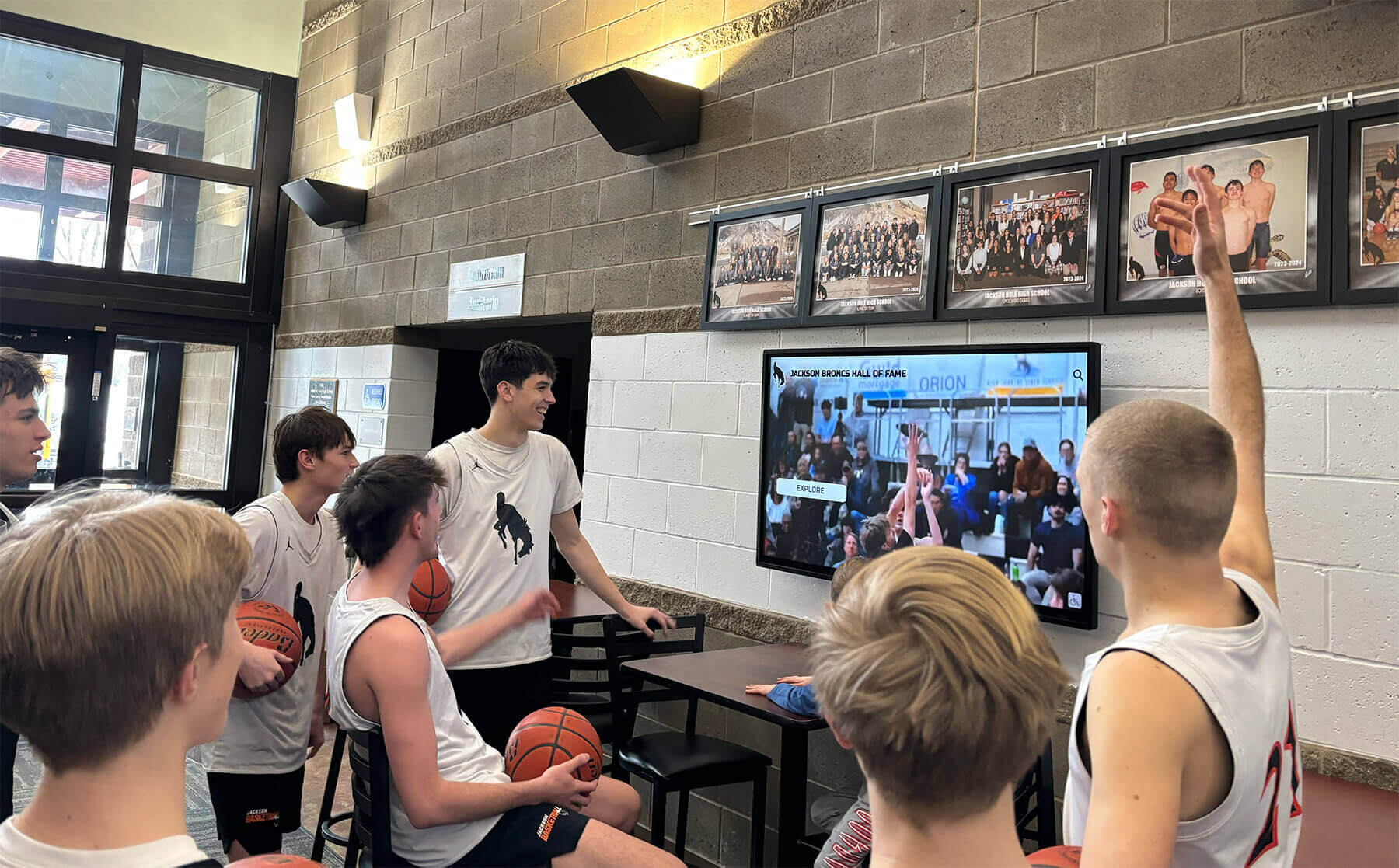Fan engagement represents the lifeblood of successful athletic programs, creating the energy, support, and community connection that transform ordinary games into memorable experiences. Schools with strong fan engagement experience higher attendance at athletic events, increased school spirit and pride, stronger alumni connections and giving, enhanced student athlete motivation and performance, greater community support and sponsorship, and improved program revenue supporting facility upgrades and opportunities.
Yet many schools struggle to move beyond passive spectator attendance, where fans show up but remain disconnected from the larger athletic community. This transactional relationship fails to generate the sustained enthusiasm that elevates athletic programs from simple competition schedules into defining elements of institutional identity and community culture.
This comprehensive guide explores proven fan engagement strategies specifically designed for schools in 2025, from traditional community-building approaches that create lasting bonds to innovative digital solutions that meet fans where they already spend their time. Whether you’re an athletic director launching a comprehensive engagement initiative, a coach seeking better parent and community support, or a school administrator looking to strengthen institutional pride through athletics, these evidence-based approaches will help you build the passionate fan community your programs deserve.
Understanding Modern Fan Engagement in School Athletics
Before implementing specific engagement strategies, understanding what truly drives fan connection helps ensure efforts address genuine needs rather than superficial symptoms.
What Fan Engagement Actually Means
True fan engagement extends far beyond simply filling bleachers on game nights. Authentic engagement manifests when community members voluntarily choose to follow and support athletic programs, actively participate in events and activities beyond watching games, derive personal satisfaction and identity from program success, contribute time, talent, or resources willingly, maintain emotional connections that persist across seasons and years, and advocate for programs within broader communities.
This engagement exists on a spectrum from passive awareness (knowing games occur but rarely attending) through moderate participation (attending big games or championships) to deep engagement (season ticket holders, booster club members, volunteer coaches, or devoted followers who rarely miss events).
The Psychology of Sports Fandom
Understanding the psychological foundations of sports fandom helps schools create strategies that tap into genuine human motivations rather than superficial tactics.
Core Psychological Drivers:
Belonging and Community Identity: Sports create shared identity around common interests. When individuals identify as fans of school athletic programs, they gain membership in communities larger than themselves. This sense of belonging proves particularly powerful in educational settings where students, families, and alumni seek connection to institutional communities.
Vicarious Achievement: Fans experience accomplishment through team success even without personally competing. When school teams win championships or individual athletes break records, fans share in those achievements, creating emotional investment in ongoing success.
Emotional Experience and Entertainment: Athletic competition provides emotional experiences—excitement, tension, joy, disappointment—that make life more interesting. Engaged fans seek these emotional experiences as entertainment and stress relief, returning repeatedly for the feelings games generate.
Tradition and Continuity: Long-standing fans develop relationships with programs spanning years or decades. Parents who attended schools pass fandom to their children. Alumni maintain connections to schools through athletics. These intergenerational traditions create powerful bonds resistant to temporary setbacks or disappointments.
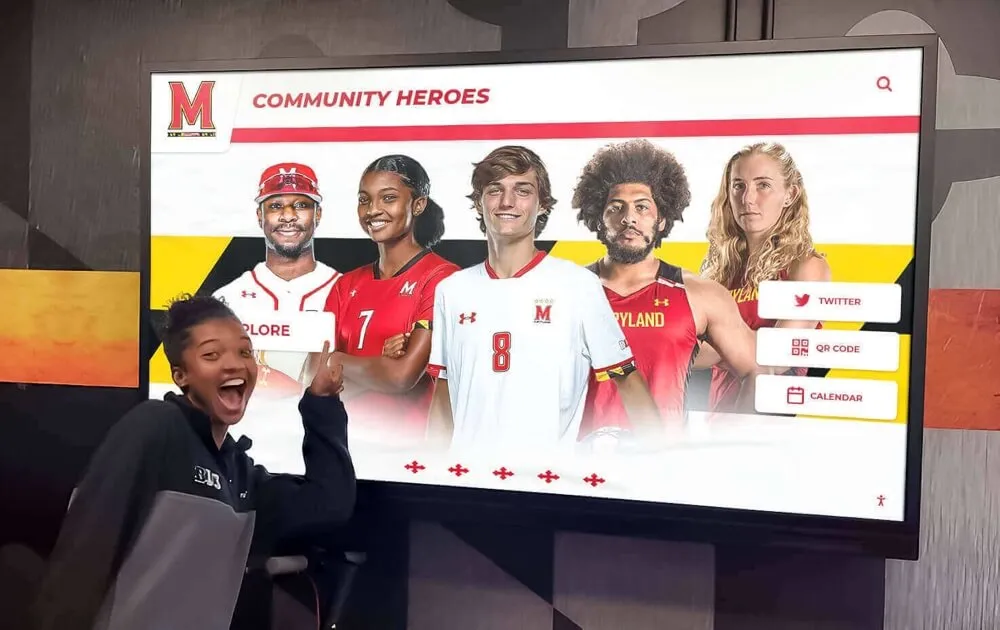
Why Traditional Attendance-Only Approaches Fall Short
Many schools mistakenly equate fan engagement with attendance numbers, measuring success solely by how many people show up to games. This narrow focus misses broader engagement opportunities while failing to create the deep connections that sustain programs through inevitable down periods.
Limitations of Attendance-Only Thinking:
Attendance metrics ignore digital engagement from fans following remotely, fail to measure depth of commitment or emotional investment, provide no insight into why people attend or what drives return visits, offer no mechanism for engaging the 80% of potential fans who never visit in person, and create vulnerability when teams struggle, as attendance drops reveal the absence of deeper community bonds.
Schools need comprehensive engagement strategies recognizing that modern fandom manifests across multiple channels and touchpoints, with attendance representing just one indicator among many measuring genuine community connection.
Building Recognition Programs That Drive Fan Engagement
Recognition programs serve dual purposes—honoring achievement while creating engagement infrastructure that connects fans to athletes, teams, and programs year-round.
Athletic Achievement Recognition
Celebrating individual and team accomplishments validates athlete effort while providing content that engages fans emotionally with program narratives.
Recognition Strategy Components:
Championship Celebrations: Prominently celebrate conference championships, state titles, playoff appearances, and tournament victories through dedicated ceremonies, permanent displays, social media campaigns, and community events. Championship recognition becomes part of program history that future teams reference and aspire to join while giving current fans reasons for pride.
Record-Breaking Performances: Honor athletes who break school or conference records through digital record boards that document historical excellence while motivating current athletes. Record recognition creates compelling narratives tracking program evolution across decades.
All-Conference and All-State Recognition: Celebrate athletes earning external recognition through prominent acknowledgment in facilities, communications, and recognition displays. External validation reflects well on entire programs while highlighting individual excellence.
College Commitment Recognition: Honor student athletes continuing athletic careers at collegiate levels through formal recognition ceremonies and permanent documentation. College commitments validate program quality while inspiring younger athletes to similar achievement.
Multi-Sport Athlete Acknowledgment: Recognize versatile athletes participating in multiple programs, demonstrating comprehensive athletic ability and commitment. Multi-sport recognition reinforces that athletic departments value well-rounded participation beyond single-sport specialization.
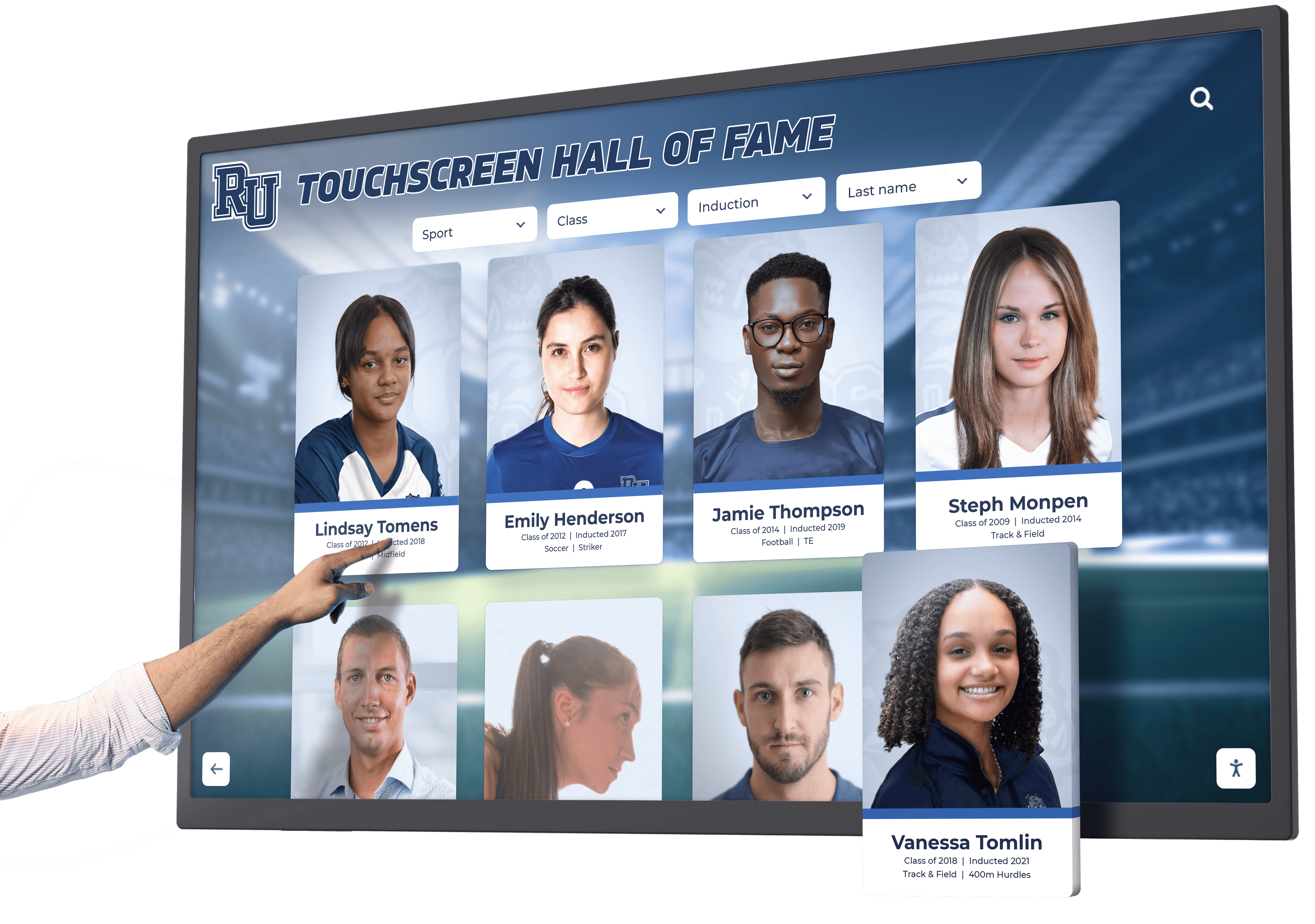
Creating Halls of Fame That Engage Multiple Generations
Athletic halls of fame serve as permanent recognition infrastructure while creating engagement opportunities connecting current fans with program history and tradition.
Hall of Fame Best Practices:
Inclusive Selection Criteria: Develop transparent criteria ensuring halls of fame honor diverse contributions—athletic excellence, coaching impact, administrative leadership, and supporter contributions. Inclusive recognition demonstrates that many paths lead to hall of fame membership, broadening potential nominee pools.
Annual Induction Ceremonies: Create meaningful events celebrating new inductees while bringing alumni back to campus. Induction ceremonies generate attendance spikes while providing content for communications and social media extending reach beyond those physically present.
Interactive Recognition Displays: Modern touchscreen hall of fame displays transform static plaques into engaging exploration experiences where fans search inductees, watch video highlights, read biographical information, and discover connections to current programs. Interactive displays hold visitor attention far longer than traditional plaques while providing essentially unlimited recognition capacity.
Intergenerational Connection: Highlight relationships between current athletes and hall of fame inductees—family connections, position similarities, or record pursuits. These connections help current fans appreciate program history while demonstrating continuity across generations.
Character and Leadership Recognition
Not all recognition should focus exclusively on competitive success. Character-based recognition demonstrates that athletic programs value personal development alongside winning.
Character Recognition Categories:
Create recognition for sportsmanship, perseverance through adversity, leadership on and off the field, academic excellence among athletes, and community service contributions. Character recognition often resonates deeply with families while honoring students who may not achieve all-conference status but exemplify program values.
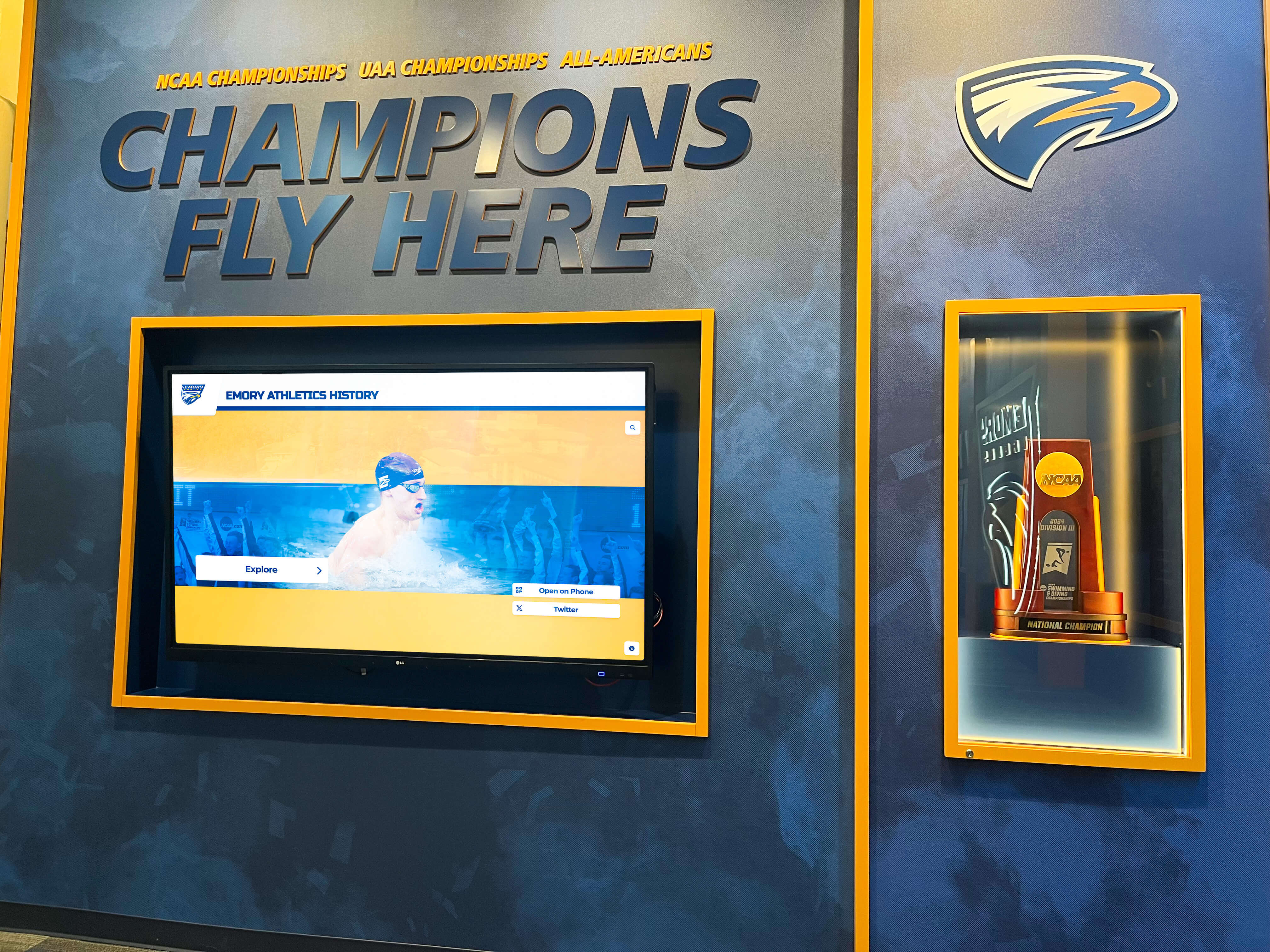
Social Media Strategies That Build Fan Communities
Social media platforms provide powerful tools for maintaining consistent fan engagement between events while extending program reach far beyond those who attend games in person.
Platform-Specific Engagement Approaches
Different platforms serve different purposes and reach different demographics. Strategic schools develop platform-specific content strategies rather than simply reposting identical content everywhere.
Instagram for Visual Storytelling: Share high-quality game action photos, behind-the-scenes practice glimpses, athlete feature content, team bonding moments, and facility showcases. Instagram’s visual nature makes it ideal for sports content while reaching younger audiences including current students and recent alumni.
Facebook for Community Building: Create dedicated team pages fostering community conversation, share longer-form updates and stories, promote upcoming events and schedule information, and facilitate booster club communication. Facebook’s demographics skew older, making it effective for reaching parents, alumni, and community members.
Twitter/X for Real-Time Updates: Provide live game updates and score reporting, share breaking news about commitments or honors, engage in conversational interaction with fans, and participate in broader sports conversations through hashtags. Twitter’s real-time nature suits fast-paced sports content.
TikTok for Reaching Young Audiences: Create fun, authentic short-form video content showing personality beyond competition, participate in trending challenges adapted to athletics context, feature athletes in relatable, entertaining content, and recognize that younger fans increasingly discover sports content through social platforms rather than traditional media.
Content Types That Drive Engagement
Effective social media strategies employ diverse content types maintaining interest while serving different engagement objectives.
Game Highlights and Recaps: Share exciting plays, key moments, and game summaries for fans who couldn’t attend or want to relive experiences. Highlight content extends game day engagement while providing entertainment value attracting casual fans.
Athlete Spotlights: Feature individual athletes through Q&A content, day-in-the-life videos, personal interest stories, academic achievement recognition, and pre-game ritual showcases. Athlete spotlights help fans develop personal connections with team members while humanizing athletes beyond their statistics.
Behind-the-Scenes Access: Give fans glimpses they wouldn’t otherwise see—practice sessions, team meetings, pre-game preparation, post-game celebrations, or travel experiences. Exclusive behind-the-scenes content rewards engaged followers while creating FOMO (fear of missing out) encouraging others to follow.
User-Generated Content: Encourage fans to share their own photos, videos, and experiences using program-specific hashtags. Repost compelling user content (with permission) demonstrating that programs value fan participation. User-generated content campaigns multiply reach through fan networks while creating authentic engagement.
Interactive Polls and Questions: Ask fans for input on game predictions, favorite moments, historical comparisons, or opinion questions. Interactive content generates engagement metrics while making fans feel their voices matter to programs.

Building Consistent Posting Schedules
Social media success requires consistent presence rather than sporadic bursts of activity. Develop sustainable posting schedules maintaining visibility without creating burnout.
Recommended Posting Frequency:
- Instagram: 4-7 posts per week plus regular Stories content
- Facebook: 3-5 posts per week with event promotion emphasis
- Twitter/X: Daily posts during seasons, several times weekly in off-season
- TikTok: 3-5 videos per week if pursuing this platform
Consistency matters more than frequency—posting three times weekly reliably outperforms sporadic bursts followed by silence.
Digital Display Technology for Fan Engagement
Modern digital displays transform how schools recognize achievement, communicate with fans, and create engaging experiences in athletic facilities.
Interactive Recognition Displays
Digital recognition walls provide dynamic platforms for celebrating athlete and team accomplishments while engaging visitors through interactive exploration.
Digital Display Advantages:
Real-Time Updates: Add new achievements, records, or recognition immediately as they occur, maintaining content freshness impossible with static displays. Timely recognition while accomplishments remain current maximizes motivational impact for athletes and engagement value for fans.
Multimedia Storytelling: Incorporate video highlights, photo galleries, audio clips, statistical data visualizations, and interactive timelines creating richer recognition experiences than traditional plaques allow. Multimedia content brings achievements to life while holding visitor attention longer.
Searchable Archives: Enable visitors to search for specific athletes, years, teams, or achievement types rather than visually scanning endless plaques. Search functionality transforms displays into research tools serving historical documentation alongside recognition purposes.
Unlimited Recognition Capacity: Physical space limitations force difficult choices about which achievements to recognize with traditional displays. Digital platforms provide essentially unlimited capacity, allowing comprehensive documentation without space constraints or expensive renovations as recognition needs grow.
Accessibility Features: Modern systems support screen readers, text magnification, adjustable contrast, and multilingual content ensuring recognition remains accessible to individuals with various abilities and language preferences.
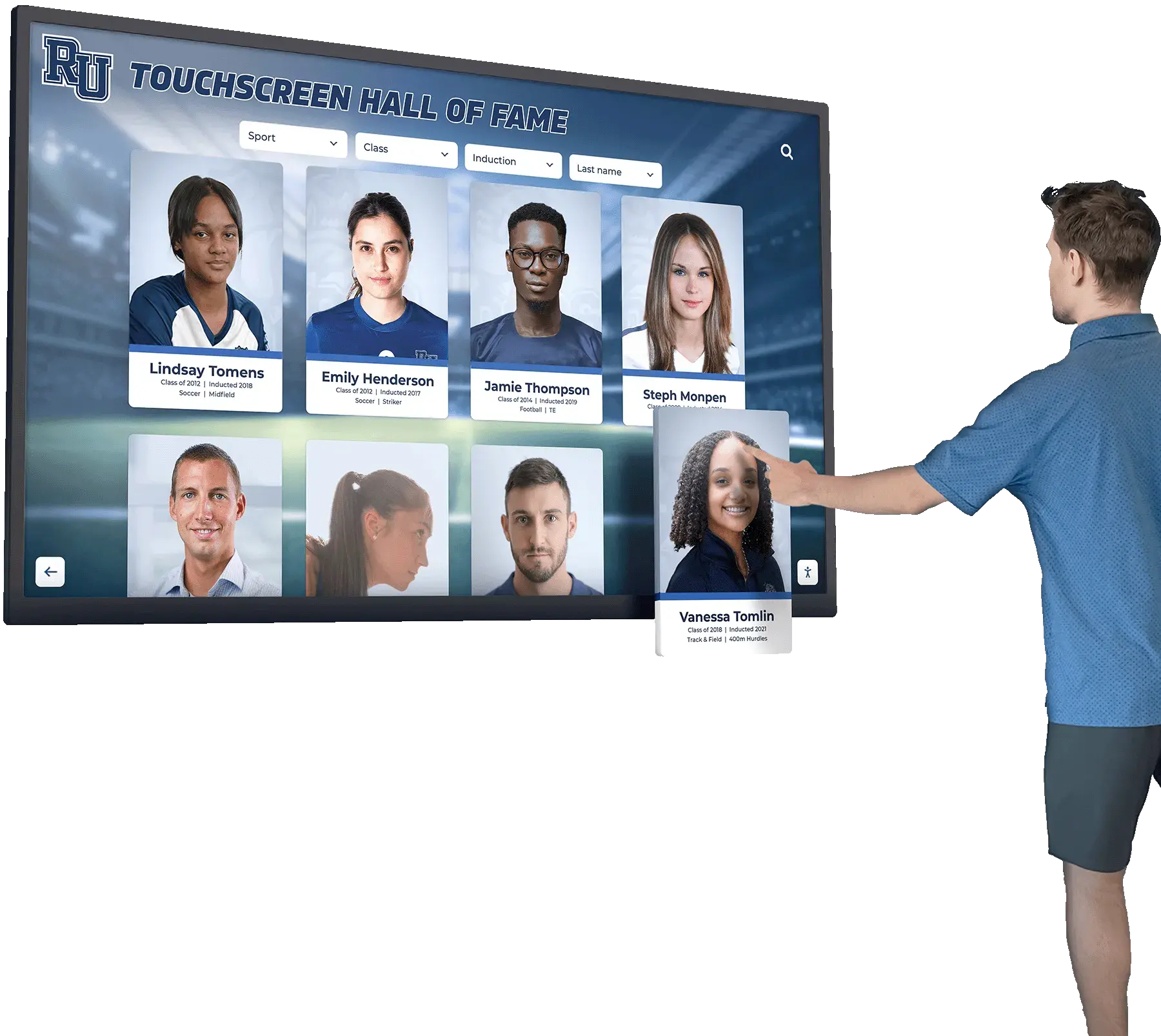
Lobby and Corridor Digital Displays
Beyond dedicated recognition displays, general-purpose digital screens throughout athletic facilities provide dynamic communication platforms engaging fans before, during, and after events.
Display Content Strategies:
Feature upcoming game schedules and ticket information, live game statistics during events, historical team photos and throwback content, athlete of the week spotlights, sponsor recognition supporting program funding, facility rental and program information, and emergency or weather-related announcements. Strategic display placement in high-traffic areas maximizes impression counts while professional content quality communicates program professionalism.
Mobile and Web-Based Engagement Platforms
Digital engagement extends beyond physical displays to mobile apps and websites fans access from anywhere.
Digital Platform Features:
Develop mobile-friendly websites with current schedules, rosters, statistics, and news; create live streaming capabilities for fans unable to attend in person; enable online ticket purchasing reducing friction in attendance process; provide searchable online versions of athletic history displays accessible anywhere; and integrate social media feeds aggregating content from multiple platforms.
Creating Game Day Experiences That Build Community
While digital engagement matters, in-person game day experiences remain crucial for building the deep connections that sustain long-term fandom.
Pre-Game Fan Engagement
Fan engagement begins before opening tipoffs or kickoffs, with pre-game experiences setting tone for entire events.
Pre-Game Experience Elements:
Tailgating and Social Gathering Spaces: Provide designated areas where fans can gather before games, creating social experiences beyond the competition itself. Tailgate atmospheres build community bonds while giving fans additional reasons to arrive early.
Youth Activities and Entertainment: Offer activities engaging younger fans—inflatable games, face painting, autograph sessions, or skills competitions. Family-friendly pre-game entertainment makes athletics accessible to parents with children while building next-generation fan bases.
Player Introductions and Recognition: Create compelling player introduction sequences with music, lighting, video content, and public address announcements. Memorable introductions build anticipation while giving athletes moments in spotlight.
Spirit Groups and Student Sections: Support and organize student-led spirit groups creating energy and atmosphere. Student section organization including themed dress-up nights, coordinated cheers, and competitions with other sections generates excitement while giving students ownership of fan experience.

In-Game Engagement Strategies
Maintaining fan energy throughout games requires strategic planning beyond simply playing competition.
In-Game Engagement Tactics:
Interactive Contests and Promotions: Incorporate halftime shooting contests, prize drawings, sponsor promotions, or fan competitions maintaining energy during breaks. Interactive elements give fans reasons to stay engaged during downtime while creating memorable moments beyond game action.
Public Address and Music Strategy: Professional public address announcing and strategic music selection enhance atmosphere without overwhelming game action. Effective PA announcers balance information delivery with entertainment while music creates energy at appropriate moments.
Video Board Content: For schools with video boards, strategic content including instant replays, statistical graphics, crowd shots, sponsor messages, and entertainment videos enhances experiences. Video boards command attention—content quality directly impacts perception of program professionalism.
Recognition of Special Groups: Acknowledge youth teams, special guests, military veterans, senior night honorees, or other groups during games. Recognition creates personal connections while demonstrating programs value broader community.
Post-Game Community Connection
Fan engagement shouldn’t end when final buzzers sound. Post-game strategies extend experiences while building anticipation for next events.
Post-Game Engagement:
Allow opportunities for fans to congratulate athletes, provide access to coaches for brief comments or interviews, share highlight videos and final statistics on social media immediately after games, and recognize outstanding performances or milestones achieved during competition. Quick post-game engagement maintains energy while competition remains fresh in fan minds.
Building Booster Clubs and Support Organizations
Organized booster clubs convert passionate fans into active program supporters providing financial resources, volunteer labor, and sustained engagement infrastructure.
Establishing Effective Booster Organizations
Well-structured booster clubs create formal mechanisms for community members to contribute beyond attendance.
Booster Club Foundation Elements:
Clear Purpose and Goals: Define specific purposes—fundraising for equipment and facilities, supporting team travel and meals, funding recognition programs, or providing scholarship opportunities. Clear missions help potential members understand how their involvement makes difference.
Inclusive Membership: Create accessible membership structures welcoming all community members regardless of financial capacity. Tiered membership levels accommodate different giving abilities while ensuring everyone can participate meaningfully.
Transparent Governance: Establish clear governance structures with elected leadership, defined decision-making processes, financial accountability, and regular communication with athletic departments. Transparent governance builds trust essential for sustained support.
Collaboration with School Administration: Ensure booster clubs work collaboratively with athletic directors and school leadership rather than operating as independent entities. Alignment prevents conflicts while ensuring booster support advances institutional priorities.

Booster Club Activities That Engage Members
Active booster clubs provide diverse involvement opportunities beyond simple financial contributions.
Engagement Activities:
Organize fundraising events like golf tournaments, auctions, or dinners; coordinate volunteer support for concessions, ticket sales, or event logistics; plan recognition events honoring athletes, coaches, and supporters; arrange pre-game social gatherings for members; and advocate for program needs with school boards and community leaders.
Varied activities accommodate different member interests and capacities while creating regular touchpoints maintaining engagement year-round.
Recognition of Booster Support
Demonstrating appreciation for booster contributions encourages sustained support while attracting new members.
Supporter Recognition Strategies:
Feature major supporters through digital donor recognition displays in athletic facilities, acknowledge booster contributions in game programs and announcements, provide special seating or parking privileges for significant supporters, host appreciation events thanking volunteers and contributors, and communicate clearly about how booster support directly benefits programs and athletes.
Alumni Engagement Through Athletics
Alumni represent powerful fan engagement opportunities, maintaining connections to schools primarily through athletics long after graduation.
Creating Meaningful Alumni Athletic Connections
Strategic alumni engagement transforms former students into lifelong program supporters.
Alumni Engagement Strategies:
Hall of Fame and Recognition Programs: Invite alumni back for hall of fame inductions, jersey retirements, or anniversary celebrations of championship teams. Recognition events create natural return-to-campus opportunities while honoring alumni achievements.
Reunion Events During Homecoming: Coordinate reunion activities for specific graduation classes, championship teams, or program eras during homecoming weekends. Reunions leverage existing event infrastructure while building attendance through personal connections.
Alumni Mentorship Programs: Connect accomplished alumni with current athletes for mentorship and career guidance. Mentorship programs benefit current students while keeping alumni engaged with programs through meaningful contribution.
Digital Communication: Maintain email lists and social media connections keeping alumni informed about current program news, recognition opportunities, and ways to stay involved. Consistent communication maintains presence without requiring in-person participation.
Legacy Recognition: Acknowledge multi-generational families with athletic program connections through special recognition categories, displayed family trees showing relationships across decades, or legacy athlete celebrations during games.
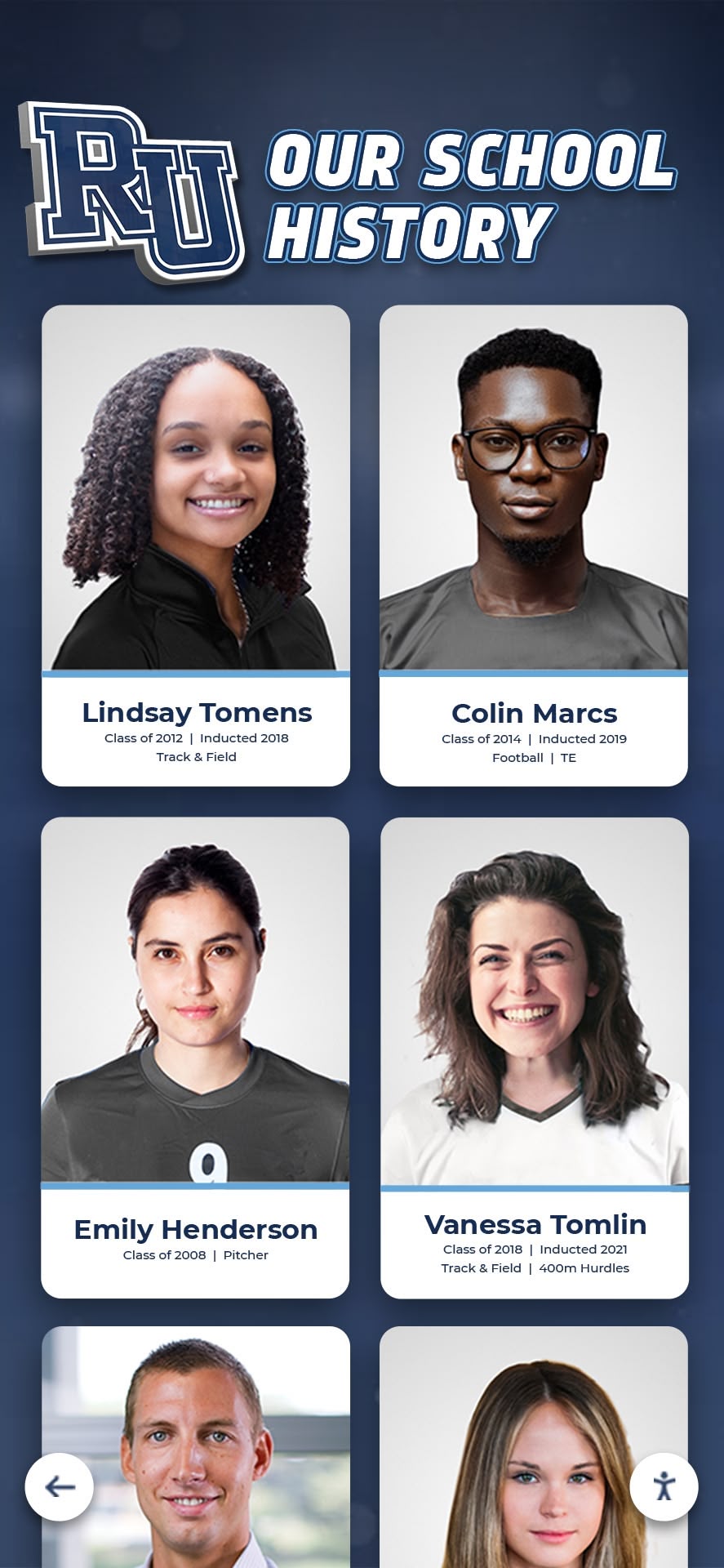
Alumni as Ambassadors and Supporters
Engaged alumni multiply program reach through their personal and professional networks.
Alumni Ambassador Roles:
Alumni can serve as program advocates in broader communities, provide networking and career connections for current athletes, contribute financially to program needs, volunteer as coaches or advisors, and recruit prospective students and athletes.
These contributions prove particularly valuable because alumni advocacy carries authenticity that institutional marketing cannot replicate.
Livestreaming and Digital Fan Reach
With over 80% of potential fans never attending events in person, digital access becomes essential for comprehensive fan engagement.
Implementing Effective Livestream Programs
Livestreaming technology enables schools to reach geographically dispersed fans, family members with scheduling conflicts, and community members unable to attend in person.
Livestream Best Practices:
Professional Production Quality: Invest in reliable cameras, audio equipment, and streaming software delivering professional-quality broadcasts. Poor production quality undermines program perception regardless of competition quality.
Commentary and Context: Provide play-by-play commentary and color analysis helping viewers follow action and understand context. Silent video streams without explanation fail to engage viewers unfamiliar with teams or situations.
Interactive Chat and Engagement: Enable chat features allowing remote viewers to interact with each other and program representatives, creating community among digital attendees. Interactive elements transform passive watching into active engagement experiences.
Archive and Replay Access: Maintain game archives allowing fans to watch replays at convenient times. On-demand access accommodates varied schedules while creating content library serving historical documentation.
Promotion and Accessibility: Communicate clearly about how to access streams, ensure mobile device compatibility, test technology before events, and provide technical support for viewers experiencing issues.
Social Media Live Features
Beyond dedicated streaming platforms, social media live features provide additional reach through established networks.
Platform-Specific Live Strategies:
Facebook Live reaches older demographics and community members, Instagram Live engages younger audiences through mobile-first experience, and YouTube Live provides searchable archive and discovery through platform’s recommendation algorithms.
Multi-platform streaming maximizes reach while accommodating different viewer preferences and technical capabilities.
Community Partnerships and Sponsorships
Local business partnerships provide financial support while creating community connections beyond school constituencies.
Developing Mutually Beneficial Partnerships
Effective sponsorships deliver value to business partners while supporting program needs.
Partnership Value Propositions:
Offer brand visibility through facility signage, game programs, digital displays, social media mentions, and public address announcements; provide community connection and goodwill through association with youth sports; create employee and customer engagement opportunities through special ticket programs or recognition; and demonstrate community investment validating business commitment to local institutions.
Clear value articulation helps businesses understand return on sponsorship investment, facilitating partnerships.
Recognition of Community Partners
Demonstrating appreciation for business partners and local sponsors encourages sustained support while attracting additional sponsors.
Sponsor Recognition Methods:
Feature sponsors prominently in athletic facilities, acknowledge contributions during events and in communications, provide complimentary tickets or hospitality benefits, include in digital displays and social media content, and communicate impact showing how sponsorships directly benefit programs and athletes.
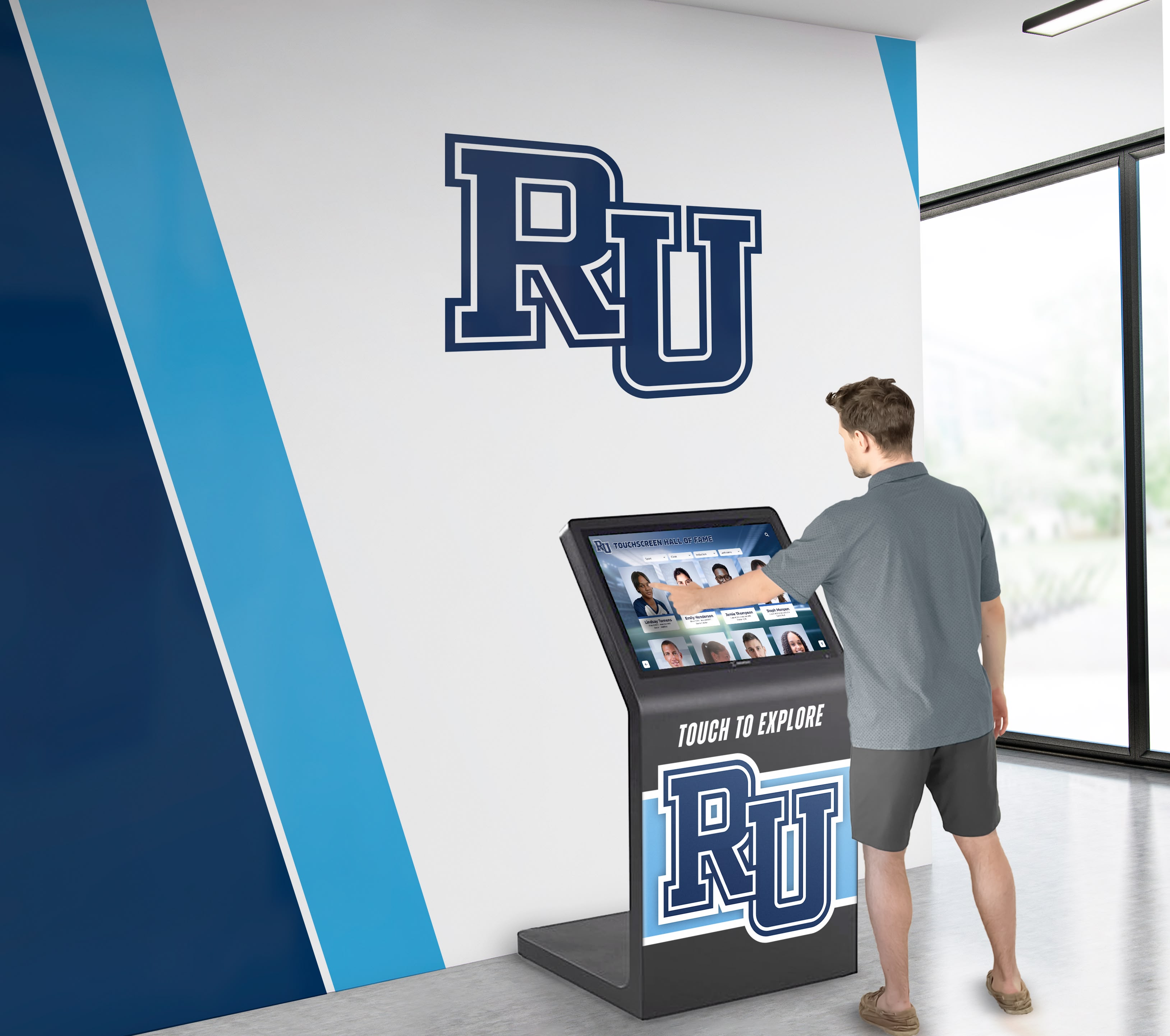
Measuring and Optimizing Fan Engagement
Effective fan engagement requires systematic measurement enabling continuous improvement based on evidence rather than assumptions.
Key Engagement Metrics to Track
Comprehensive measurement monitors multiple indicators revealing engagement trends and strategy effectiveness.
Essential Fan Engagement Metrics:
Track attendance figures including average attendance, percentage of capacity, and trending patterns across time; monitor social media metrics like follower growth, engagement rates, reach, and share counts; measure digital viewership through livestream viewers, total viewing minutes, and geographic distribution; assess booster club membership growth, event participation, and fundraising results; survey fan satisfaction, likelihood to recommend, and reasons for attendance or non-attendance; and analyze demographic data understanding who engages and who remains unreached.
Segmented analysis by sport, event type, competition level, or demographic group reveals patterns informing targeted engagement strategies.
Using Data to Inform Strategy
Data collection means nothing without analysis and application to decision-making.
Data-Driven Optimization:
Identify which events generate highest engagement and why, recognize content types performing best on various platforms, understand demographic groups showing strong engagement versus those remaining underengaged, determine which recognition programs generate greatest fan interest, and test new engagement strategies on small scales before full implementation.
Regular review cycles analyzing data, identifying improvement opportunities, implementing changes, and evaluating results create continuous improvement preventing stagnation while ensuring strategies evolve with changing contexts and preferences.
Implementing Your Fan Engagement Strategy
Schools ready to enhance fan engagement should follow systematic approaches ensuring effective launch and sustainable operations.
Conducting Fan Engagement Audits
Begin with comprehensive assessment understanding current state before implementing new initiatives.
Audit Components:
Survey current fans about experiences, preferences, and suggestions for improvement; analyze existing attendance, social media, and engagement data establishing baselines; inventory current engagement initiatives evaluating effectiveness; assess facility and technology infrastructure identifying gaps; and benchmark against peer institutions understanding relative performance and identifying best practices worth adapting.
Thorough audits prevent implementing solutions for non-problems while ensuring strategies address actual needs.
Building Comprehensive Action Plans
Systematic planning increases likelihood of successful implementation and sustained results.
Planning Steps:
- Priority Setting: Select 3-5 high-impact initiatives for initial focus rather than attempting everything simultaneously
- Goal Establishment: Define specific, measurable objectives with clear timelines enabling progress tracking
- Resource Allocation: Identify needed budget, personnel, time, and expertise securing necessary commitments
- Responsibility Assignment: Designate specific individuals accountable for each initiative component
- Timeline Development: Create realistic implementation schedules accounting for seasonal rhythms and competing priorities
- Communication Planning: Develop strategies ensuring stakeholders understand and can participate in initiatives
- Assessment Framework: Establish measurement approaches tracking progress and identifying needed adjustments
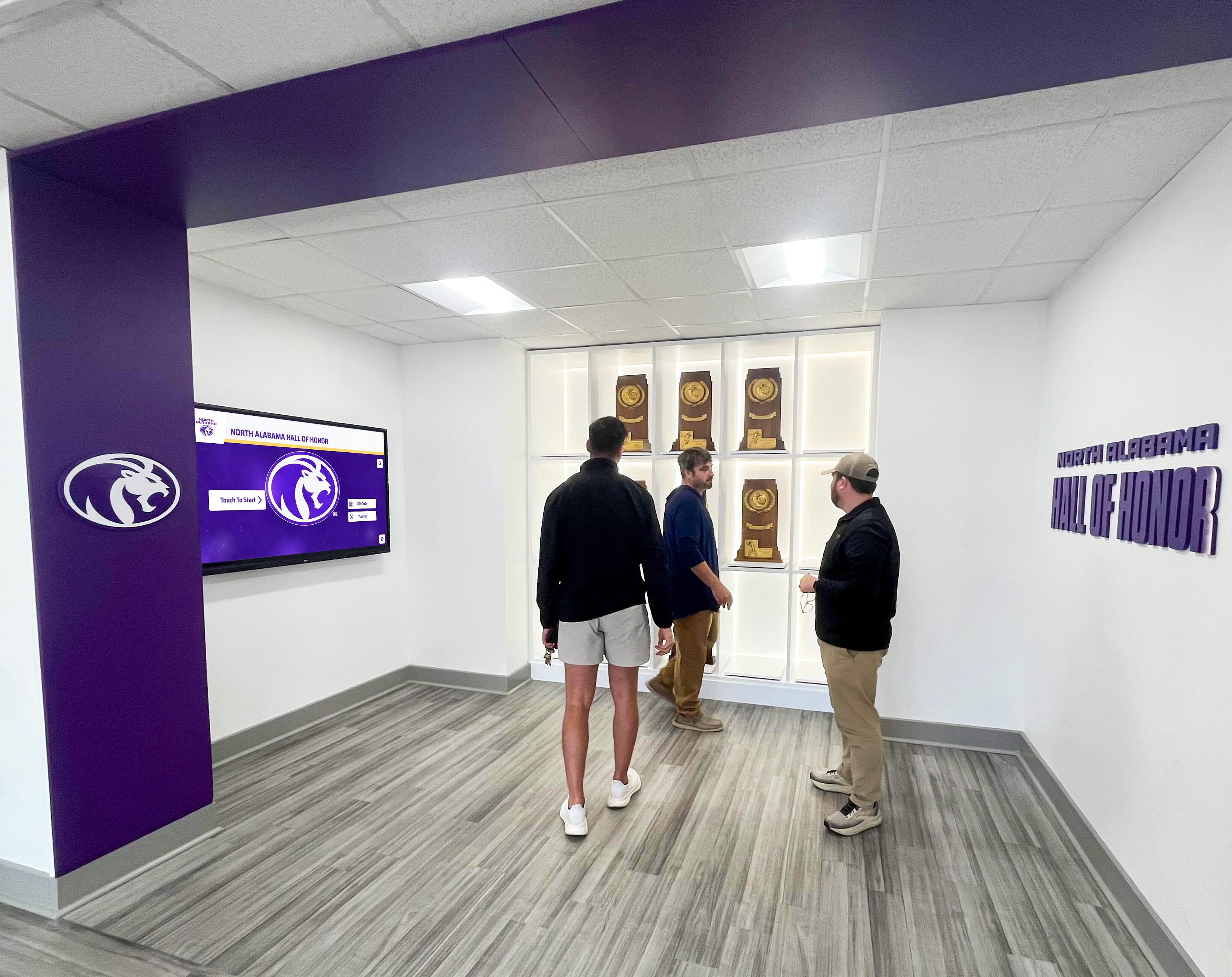
Securing Stakeholder Support
Successful fan engagement requires buy-in across multiple constituencies.
Building Support:
Engage athletes in planning ensuring they understand how engagement benefits programs and themselves personally; involve coaches as engagement ambassadors who communicate value to athletes and families; recruit enthusiastic community members as early adopters and champions; communicate clearly with parents about opportunities to participate and support; and secure administrative backing providing necessary authority, resources, and organizational priority.
Broad stakeholder support creates momentum while distributing implementation effort across multiple contributors preventing burnout.
Conclusion: Building Lasting Fan Communities
Effective fan engagement transforms athletics from simple competition schedules into defining elements of school identity and community culture. Authentic engagement emerges when programs consistently create value for fans beyond just game outcomes, recognize and appreciate community support, maintain consistent presence across multiple touchpoints, leverage technology meeting fans where they already spend time, and build traditions creating continuity across generations.
The most successful fan engagement initiatives share common characteristics: they address genuine community needs rather than implementing generic programs, they engage stakeholders authentically in design and implementation, they receive adequate resource support demonstrating institutional commitment, they align with school values and athletic program priorities, they include measurement mechanisms enabling continuous improvement, and they persist across leadership changes because they become embedded in institutional culture.
Key Principles for Fan Engagement Success:
- Start with understanding genuine fan motivations rather than assumptions about what should work
- Implement comprehensive recognition celebrating achievements while creating engagement infrastructure
- Leverage social media and digital technology extending reach beyond in-person attendance
- Create compelling game day experiences making events worth attending beyond competition outcomes
- Build organizational structures like booster clubs converting passion into sustained support
- Engage alumni maintaining lifelong connections through athletic program involvement
- Enable digital access through livestreaming for the majority who cannot attend in person
- Develop community partnerships creating mutual value for businesses and programs
- Measure systematically and optimize continuously based on evidence about what works
- Commit to long-term consistency rather than expecting immediate transformation
Schools that invest strategically in building authentic fan engagement reap substantial benefits: increased attendance generating revenue for program improvements, stronger community support and sponsorship, enhanced student athlete experiences and recruitment, improved institutional pride and reputation, and most importantly, communities where athletics serve as unifying forces bringing diverse constituencies together around shared identity and purpose.
Ready to transform your athletic program’s fan engagement through modern recognition and digital display solutions? Platforms like Rocket Alumni Solutions provide comprehensive tools for celebrating achievement, connecting generations, and building the lasting fan communities your programs deserve through interactive recognition displays and engagement technology designed specifically for schools.
